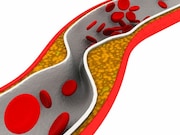Classifier developed using EHR data identifies patients at highest probability threshold for FH
THURSDAY, April 18, 2019 (HealthDay News) — A machine learning classifier can effectively identify patients at risk for familial hypercholesterolemia (FH), according to a study published online April 11 in npj Digital Medicine.
Juan M. Banda, Ph.D., from Stanford University in California, and colleagues used electronic health record (EHR) data to develop a classifier that could identify potential FH patients. A random forest classifier was trained using data from 197 known patients and 6,590 matched noncases.
On a held-out test set, the researchers found the classifier had a positive predictive value (PPV) of 0.88 and sensitivity of 0.75. The classifier’s prediction accuracy was assessed based on chart review of 100 patients at risk for FH and not included in the original dataset. The classifier correctly identified 84 percent of patients at the highest probability threshold; as the threshold lowered, performance decreased. PPV was 0.85 in external validation on 466 FH patients (236 with genetically proven FH) and 5,000 matched noncases.
“Applied broadly, using our classifier to screen using EHRs could identify many thousands of the undiagnosed patients with FH and lead to more effective therapy and screening of their families,” the authors write.
Several authors disclosed financial ties to the pharmaceutical and medical device industries.
Copyright © 2019 HealthDay. All rights reserved.








